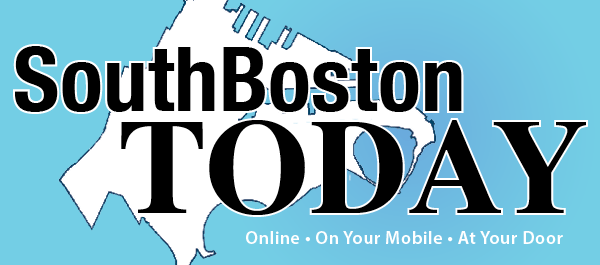|
Mayor Martin J. Walsh and the
Boston Planning & Development Agency (BPDA) released the 2018 Inclusionary Development
Policy (IDP) Annual Report, detailing how Boston is
leveraging the strong development market to create and preserve affordable
housing opportunities in every neighborhood. In 2018, 546 new IDP units
were completed, representing 21 percent of all IDP units in Boston.
“In order to maintain a
strong middle class and be a thriving, diverse city, we must continue to
create and preserve housing for individuals and families at a range of
income-levels,” said Mayor Walsh. “The Inclusionary Development
Policy is one of our many tools for creating moderate and middle-income
housing, and our latest report is a testament to its impact across Boston’s
neighborhoods.”
IDP requires that developers of
buildings with 10 or more units seeking zoning relief or building on City of
Boston owned land set aside a percentage of their units as income-restricted
to moderate- to middle-income households.
Since the inception of IDP in
2000, the policy has resulted in 2,599 units of stable, income-restricted
housing for moderate- and middle-income families, and $137.1 million in
funding. When combined with other affordable housing resources, this funding
has supported the completion or preservation of 1,414 additional units of
housing, affordable to very low-, low-, and moderate-income households.
In his 2019 legislative package, Mayor
Walsh is proposing strengthening the Inclusionary Development Policy as a
strategy to capture affordable housing units and funding from projects which
are zoning compliant, expanding the work that Boston has done to address the
region’s affordable housing crisis. The other housing bills proposed seek to help
existing tenants, particularly older adults, remain in their homes.
Notably, 2018 saw the completion
of the 239-unit Beverly, the
first fully affordable and workforce housing development in 25 years, located
near North Station. All of the units in the Beverly are income-restricted,
ranging from 30 percent of Area Median Income (AMI), up to 165 percent of
AMI. The project was funded in part with off-site contributions Related
Beal was able to secure from the Hub on Causeway project and by a voluntary
contribution from its own Lovejoy Wharf project.
“Boston benefits from
diversity in housing that provides options to the families, talent and
companies that make our city great,” said Kimberly Sherman Stamler,
President of Related Beal. “We are proud of our partnership with the
City and government partners on The Beverly in a shared effort to achieve the
Mayor’s workforce and affordable housing goals. The thousands of housing
units created under the IDP are a testament to the vision and leadership of
the Mayor and the many city agencies that work to achieve these shared
goals.”
Of the total IDP housing stock, 16
percent of units are located in Downtown, 13 percent are located on the South
Boston Waterfront, 11 percent are located in the South End, and nine percent
are located in South Boston.
“Inclusionary Development
Policy funds from projects on the South Boston Waterfront have been
instrumental in leveraging both public and private resources to develop and
preserve affordable housing in the South Boston neighborhood,” said
Donna Brown, Executive Director of the South Boston Neighborhood Development
Corporation (NDC). “South Boston NDC has been able to utilize IDP funds
to build new affordable housing for Veterans, the workforce and for the
elderly. We recently used IDP to purchase private, occupied rental
housing and preserve it for low- and moderate-income residents. IDP is
critically important to ensuring that Boston remains an economically diverse
city.”
According to data compiled for the
2018 report, of all on-site and off-site IDP Units created by private
developers, 25 percent are homeownership units, and 75 percent are rental
units. In addition, a substantial number of new IDP units are anticipated to
be completed over the next few years: 834 units are under construction or have
been permitted, and there are 1,285 units in projects that have been approved
by the BPDA but have not yet pulled a building permit.
When the policy was introduced in
2000, few cities had a similar policy. Today, Boston is often highlighted for
the success of its program, and towns and cities across the country are using
inclusionary development programs to meet affordable housing needs. 2018
marks the third year the BPDA has released the annual IDP report, as one of
several new steps the agency is taking to track progress to guide inclusive
growth in Boston.
The report builds on Mayor Walsh’s
commitment to preserving and expanding Boston’s affordable housing, ensuring
all families who wish to live in Boston can. Currently, one in five housing
units in Boston is income restricted to people with none to moderate incomes.
Boston has secured funding to build affordable housing by utilizing a range
of tools, including leveraging market-rate development, collecting linkage
and Inclusionary Development Policy (IDP) payments from real estate
developers, and by supporting passage of the Community Preservation Act
(CPA).
Last month, Mayor Walsh and the
City’s Community Preservation Committee (CPC) this week recommended 56
projects, totaling more than $34 million, for inclusion in the fall funding
round for the Community Preservation Act (CPA). In 2018, Mayor Walsh
increased the City’s overall housing targets from 53,000 to 69,000 new units
by 2030, including 15,820 income-restricted units, to meet Boston’s population
growth. These income-restricted units will include purchasing 1,000 rental
housing units from the speculative market and income-restricting them through
an expanded Acquisition Opportunity
Program.
|













